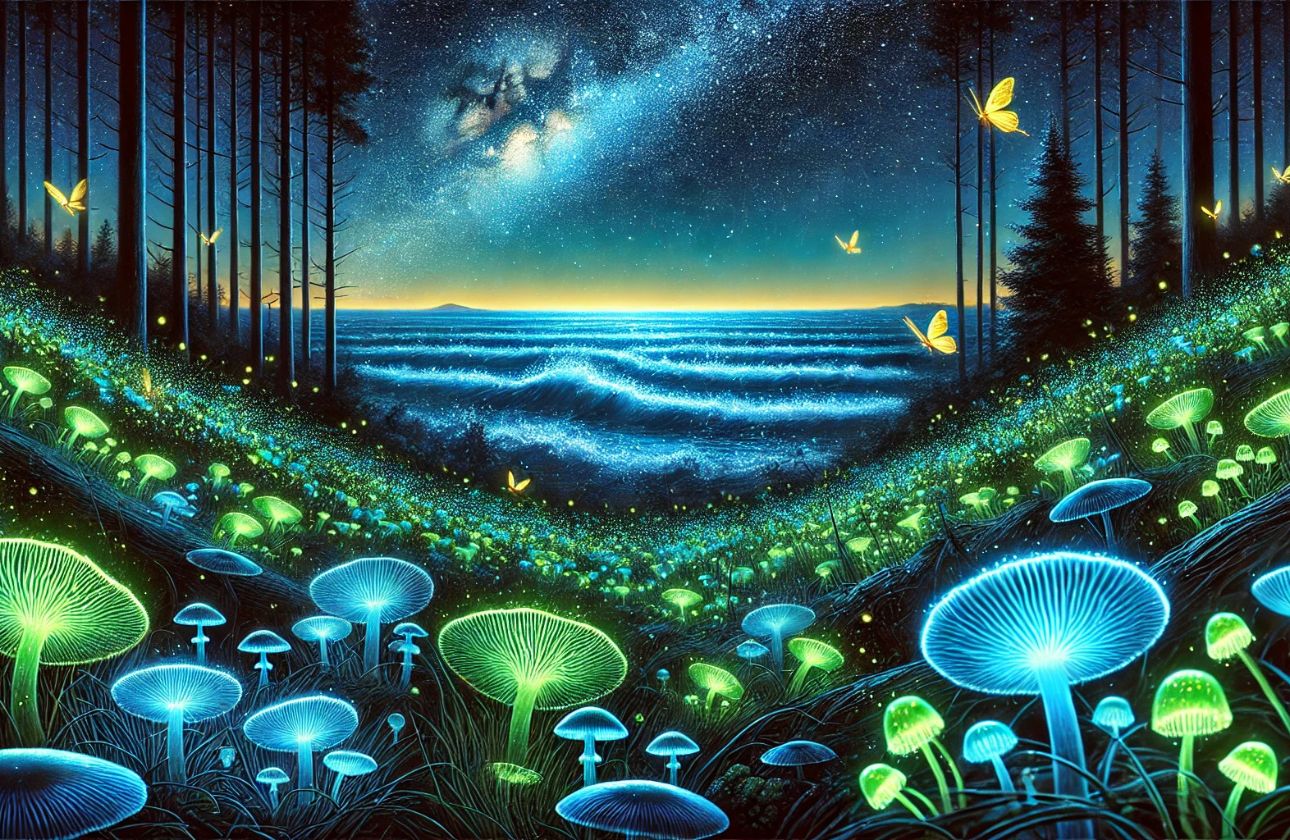The Wonders of Bioluminescence in Nature
Bioluminescence is one of nature's most mesmerizing phenomena, where living organisms emit light. From the depths of the oceans to dense forests, this glowing spectacle captivates scientists, photographers, and nature enthusiasts alike. In this blog, we’ll explore the wonders of bioluminescence, its causes, and the fascinating creatures that light up our planet.
What Is Bioluminescence?
Bioluminescence refers to the production and emission of light by living organisms. This process occurs through a chemical reaction involving luciferin (a light-emitting compound) and luciferase (an enzyme). When these two interact, light is produced. This phenomenon is commonly found in marine environments but also occurs on land.
The Science Behind the Glow
Bioluminescence serves various purposes in the natural world. For some species, it’s a survival mechanism to evade predators, attract mates, or lure prey. The light emitted can be blue, green, or even red, depending on the organism and its environment.
Creatures That Glow
- Fireflies: These winged insects are perhaps the most familiar examples of bioluminescence on land. Their glowing abdomens are used to attract mates.
- Deep-Sea Anglerfish: Found in the ocean's depths, these fish use a glowing lure on their heads to attract prey.
- Glowing Mushrooms: Certain fungi, such as the "foxfire," emit a greenish glow to attract insects that help spread their spores.
- Jellyfish: Some species of jellyfish glow to deter predators or communicate with others of their kind.
- Plankton: Bioluminescent plankton create dazzling displays in oceans, lighting up waves and shorelines when disturbed.
Best Places to Witness Bioluminescence
If you’re eager to experience bioluminescence firsthand, here are some breathtaking locations:
- Mosquito Bay, Puerto Rico: Known as the brightest bioluminescent bay in the world.
- Maldives: Witness glowing beaches caused by bioluminescent plankton.
- Toyama Bay, Japan: Famous for the glowing firefly squid.
- Waitomo Caves, New Zealand: Home to thousands of glowing worms.
Environmental Impact
Bioluminescent organisms are sensitive to environmental changes. Pollution, climate change, and human activities threaten their existence. Protecting these ecosystems ensures that future generations can marvel at their beauty.
Bioluminescence is a natural wonder that reminds us of the extraordinary diversity of life on Earth. Whether you’re a scientist, a photographer, or a curious traveler, witnessing this glowing phenomenon is an unforgettable experience.




Comments (0)